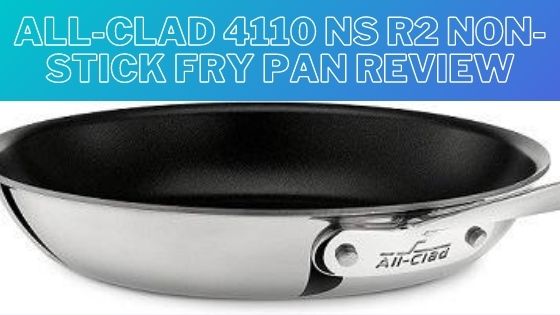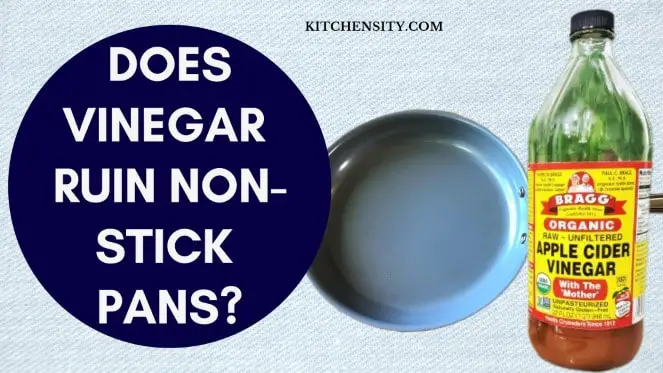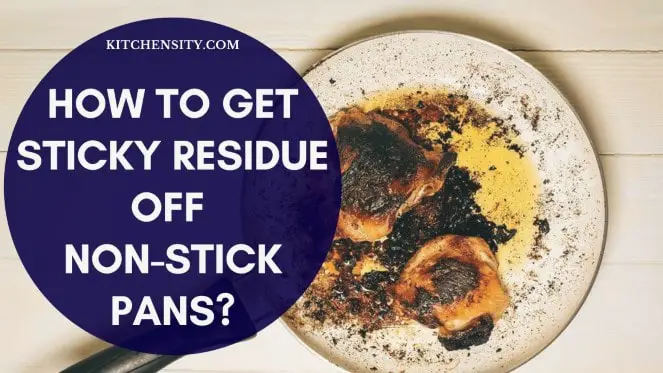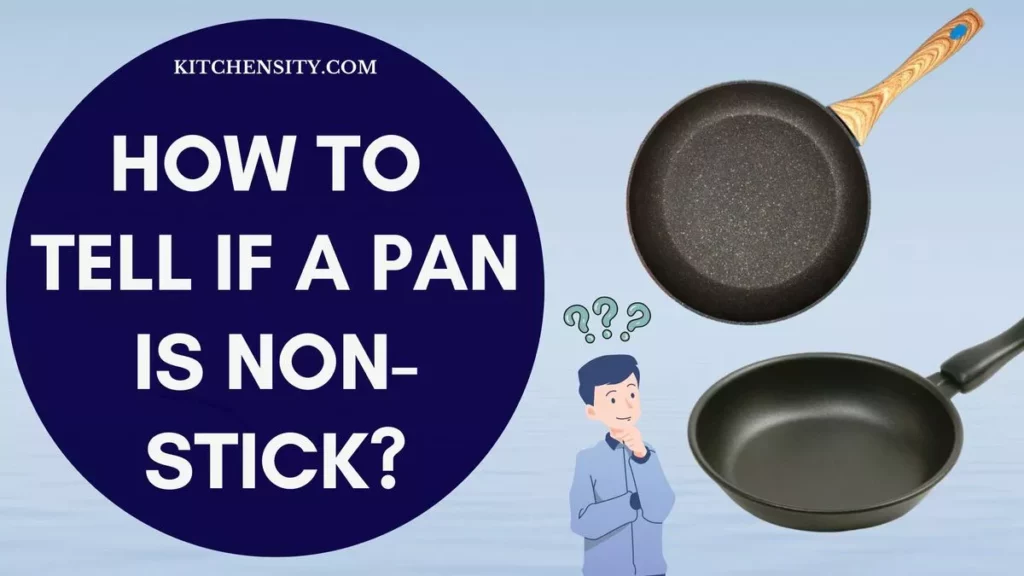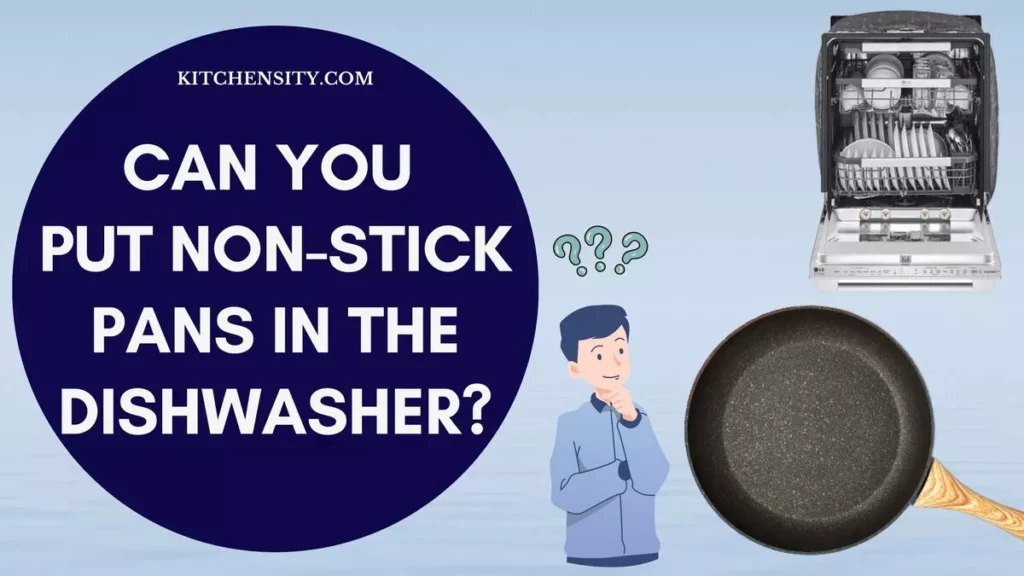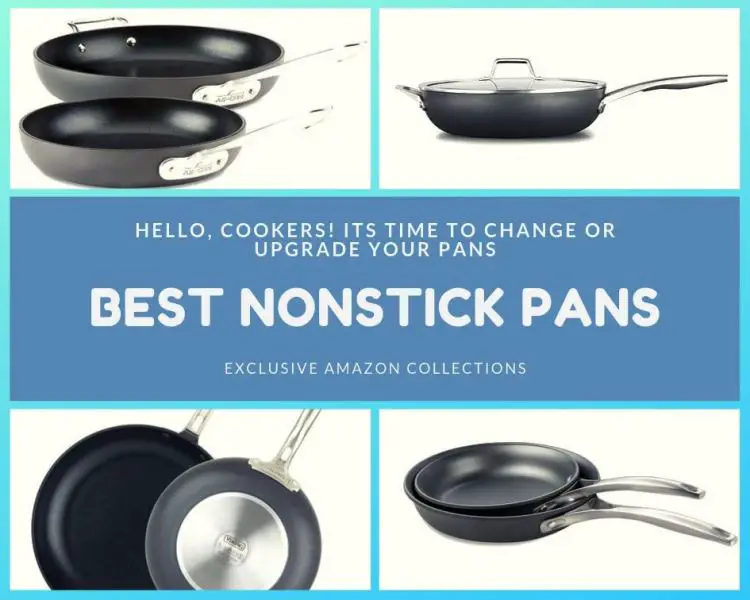Welcome to our comprehensive guide on using a non-stick pan for the first time! Whether you’re a novice in the kitchen or looking to make the most of your new cookware, understanding the proper techniques for initial use is essential.
In this article, we’ll walk you through everything you need to know to ensure a successful and enjoyable experience with your non-stick pan from day one. Let’s dive in and explore the best practices for getting started with your non-stick cooking journey.
To use a non-stick pan for the first time, start by washing it with warm, soapy water and drying it thoroughly. Preheat the pan over medium heat, add a small amount of oil, and then cook your food as usual, using gentle utensils to avoid scratching the surface. After cooking, clean the pan with a soft sponge or cloth and mild dish soap, ensuring it is completely dry before storing.
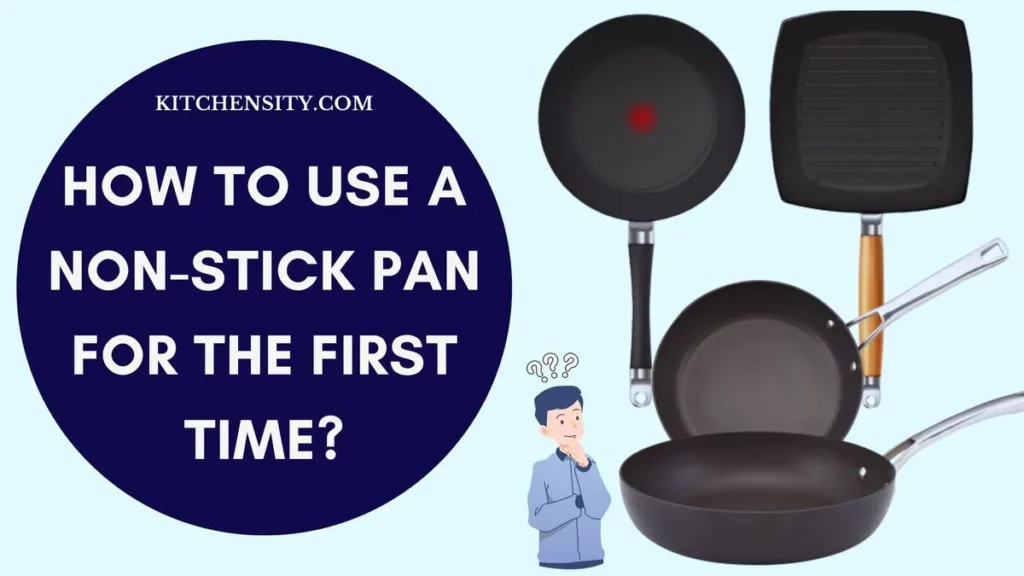
Table of Contents
Preparing Your Non-Stick Pan For First Use
Before you start cooking with your new non-stick pan, it’s important to prepare it properly to ensure optimal performance and longevity. Here are the essential steps to get your non-stick pan ready for its first use:
What To Do Before Using A Non-Stick Pan For The First Time?
Before using a non-stick pan for the first time, wash it with warm, soapy water and dry it thoroughly to remove any residues. Check the manufacturer’s instructions to see if the pan requires seasoning before use, and if so, follow the recommended seasoning process. Inspect the pan for any signs of damage, such as scratches or dents, and ensure that it is in good condition before cooking with it for the first time.
Here’s a detailed explanation of what to do before using a non-stick pan for the first time:
- Wash the Pan: Start by washing the non-stick pan with warm, soapy water. Use a soft sponge or cloth to gently clean the interior and exterior surfaces of the pan. This step removes any manufacturing residues, dust, or packaging oils that may be present.
- Dry Thoroughly: After washing, thoroughly dry the pan with a clean towel or cloth. Ensure that there is no moisture left on the surface of the pan, as water droplets can affect the non-stick coating and may lead to spotting or rusting.
- Seasoning (If Required): Some non-stick pans may benefit from seasoning before the first use. Seasoning involves applying a thin layer of oil to the pan’s surface and heating it gently to create a protective layer. Follow the manufacturer’s instructions for seasoning, if applicable, to enhance the non-stick properties of the pan.
- Inspect for Damage: Before using the pan, inspect it for any signs of damage, such as scratches, dents, or loose handles. If you notice any issues, contact the manufacturer for guidance on whether the pan is safe to use or needs to be replaced.
Also Read – Are Non-Stick Coatings Safe For Cooking?
Are You Supposed To Preheat A Nonstick Pan?
Yes, you can preheat a non-stick pan. Preheating the pan over medium heat before adding ingredients can help ensure even cooking and prevent food from sticking to the surface. However, it’s important not to use high heat, as excessive temperatures can damage the non-stick coating.

Here’s a detailed explanation of preheating a non-stick pan:
- Benefits of Preheating: Preheating a non-stick pan can help ensure even cooking and browning of food. It allows the pan to reach the desired temperature before adding ingredients, which can be particularly important for recipes that require precise heat control or searing.
- When to Preheat: Consider preheating your non-stick pan for tasks like sautéing, searing, or frying, where achieving a specific temperature is crucial for the desired cooking results. Preheating can also reduce the likelihood of food sticking to the pan.
- Preheating Guidelines: If you decide to preheat your non-stick pan, do so over medium heat to avoid overheating the pan and damaging the non-stick coating. It’s important not to exceed the recommended temperature for the specific non-stick material used in your pan.
- Exceptions: Some recipes or cooking methods may not require preheating, especially those that involve delicate foods or low-heat cooking. In such cases, you can add ingredients to a cold pan and gradually increase the heat as needed.
- Safety Considerations: Always follow the manufacturer’s guidelines regarding preheating and temperature limits for your specific non-stick pan. Overheating can damage the non-stick coating and affect its performance and longevity.
So, preheating a non-stick pan can be beneficial for certain cooking tasks, but it’s important to do so carefully and within the recommended temperature range to preserve the integrity of the non-stick coating.
Also Read – Types Of Non-Stick Coatings
Can You Use A Non-Stick Pan Straight Away?
Using a non-stick pan straight away, without any additional preparation, is generally safe and acceptable for most non-stick cookware. Here are the steps for using a non-stick pan straight away:
- Ready for Immediate Use: Most non-stick pans are designed to be ready for immediate use after a simple initial wash with warm, soapy water. This initial wash is intended to remove any residues from the manufacturing process and ensure cleanliness.
- Avoiding Extra Steps: Unlike some other types of cookware that may require seasoning or additional preparation before the first use, non-stick pans typically do not need any special treatment before cooking with them for the first time.
- Considerations for Seasoning: Some manufacturers may recommend seasoning a non-stick pan before the first use to enhance its non-stick properties. However, this step is often optional and depends on the specific instructions provided by the manufacturer.
- Assessing Manufacturer’s Guidelines: It’s important to read and follow the manufacturer’s guidelines that come with your non-stick pan. These guidelines may include specific instructions or recommendations for the initial use of the pan.
- Common Sense Precautions: While non-stick pans are generally safe for immediate use, it’s important to exercise common sense when cooking with them. Avoid using metal utensils that can scratch the non-stick coating, and be mindful of the recommended temperature range for your specific pan.
So, most non-stick pans can be used straight away after a simple wash, but it’s essential to review the manufacturer’s instructions for any specific recommendations regarding the initial use of the pan.
Also Read – How To Extend The Lifespan Of Non-Stick Pans?
Using Your Non-Stick Pan For The First Time
Once you’ve prepared your non-stick pan for its inaugural use, it’s time to start cooking! Here’s a guide to using your non-stick pan for the first time:
How To Use A Non-Stick Pan For The First Time?
Using a non-stick pan for the first time requires some basic steps to ensure proper cooking and to maintain the integrity of the non-stick coating. Here’s how to use a non-stick pan for the first time:
- Selecting the Right Oil: Choose a cooking oil with a high smoke point, such as vegetable oil, canola oil, or grapeseed oil. These oils are less likely to burn at higher temperatures, which can help prevent sticking and ensure even cooking.
- Preheating the Pan: Preheat the non-stick pan over medium heat. Avoid using high heat, as excessive temperatures can damage the non-stick coating. Preheating allows the pan to reach an even temperature, which is important for proper cooking and browning of food.
- Adding Oil: Once the pan is preheated, add a small amount of oil and swirl it around to coat the cooking surface evenly. This helps create a barrier between the food and the pan, reducing the likelihood of sticking.
- Cooking with Care: Add your ingredients to the pan and cook as usual, using gentle utensils such as silicone, wood, or nylon to avoid scratching the non-stick coating. Avoid using metal utensils, as they can damage the surface.
- Cleaning After Use: After cooking, allow the pan to cool slightly before cleaning. Wash the pan with warm, soapy water and a soft sponge or cloth. Avoid using abrasive cleaners or scouring pads, as they can scratch the non-stick surface.
- Drying and Storing: Thoroughly dry the pan after washing to prevent water spots or damage to the non-stick coating. Store the pan in a dry, cool place, preferably with a protective liner if stacking with other cookware.
Also Read – Things To Look For When Buying Non-Stick Cookware
How Do You Wash A Non-Stick Pan The First Time?
When washing a non-stick pan for the first time, begin by allowing it to cool down slightly after use. Wash the pan with warm, soapy water using a soft sponge or cloth, avoiding abrasive cleaners or scrubbing pads that can damage the non-stick coating. Rinse the pan thoroughly to remove any soap residue, and then dry it completely with a clean towel or cloth before storing it.

Here’s a detailed explanation of how to wash a non-stick pan for the first time:
- Cooling the Pan: Allow the pan to cool down slightly after cooking to avoid thermal shock, which can damage the non-stick coating.
- Gentle Washing: Wash the pan with warm, soapy water and a soft sponge or cloth. Avoid using abrasive cleaners, steel wool, or harsh scrubbing pads, as they can scratch the non-stick surface.
- Removing Residue: Gently scrub any food residue or stubborn stains with a non-abrasive sponge or cloth. For tough spots, you can use a mild dish soap to help break down the residue.
- Rinsing Thoroughly: Rinse the pan thoroughly with clean water to remove any soap or remaining food particles. Ensure that all soap residue is washed away to prevent it from affecting the non-stick coating.
- Drying Completely: After washing, dry the pan thoroughly with a clean, soft towel or cloth. Pay attention to the edges and any crevices where water might collect. Proper drying helps prevent water spots and corrosion.
- Storing Properly: Store the clean, dry pan in a cool, dry place. If stacking with other cookware, use protective liners to prevent scratches on the non-stick surface.
Also Read – Can You Deep Fry In A Non-Stick Pan?
What Not To Do With Non-Stick Pans?
To maintain the quality and longevity of your non-stick pan, it’s important to avoid certain practices that can damage the non-stick coating or compromise its performance. Here’s what not to do with non-stick pans:
- Using Metal Utensils: Avoid using metal utensils, such as knives, forks, or metal spatulas, as they can scratch and damage the non-stick coating. Opt for silicone, wood, or nylon utensils instead.
- Cooking at High Heat: Refrain from cooking at excessively high temperatures with non-stick pans, as this can cause the non-stick coating to degrade over time. Stick to medium or low heat settings for best results.
- Using Abrasive Cleaners: Avoid using abrasive cleaners, steel wool, or harsh scouring pads when cleaning non-stick pans, as they can scratch the surface. Use gentle cleaning tools like soft sponges or cloths.
- Stacking Unprotected: When storing non-stick pans, avoid stacking them without protective layers between each pan to prevent scratches and damage to the non-stick coating.
- Using Cooking Sprays: Refrain from using cooking sprays containing aerosolized oils on non-stick pans, as these can leave a residue that is difficult to remove and may affect the non-stick properties.
Also Read – Best Non-Stick Cookware Brands
Do Professional Cooks Use Non-Stick Pans?
Yes, professional cooks do use non-stick pans, especially for certain types of cooking tasks. Non-stick pans are valued in professional kitchens for their ability to cook delicate foods like eggs and fish without sticking, making them a popular choice for tasks that require precise control and gentle handling.
However, it’s important to note that non-stick pans used in professional settings are often of higher quality and durability compared to those used in home kitchens, as they need to withstand heavy use and frequent cleaning.
How To Use Non-Stick Pans In Cooking Classes?
When using non-stick pans in cooking classes, it’s essential to select the right size and type of pan for the recipes being taught. Before cooking, ensure that the pans are clean and free from any damage that could affect their performance. After use, clean the pans gently with mild soap and avoid abrasive cleaners to maintain their non-stick properties for future classes.
Here are the steps to effectively use non-stick pans in cooking classes:
- Preparation: Before the class begins, inspect each non-stick pan for any signs of damage, such as scratches or dents. Ensure that the cooking surface is clean and free from any residue.
- Selecting the Right Pan: Choose non-stick pans appropriate for the cooking tasks planned for the class. Different sizes and types of non-stick pans may be required depending on the recipes being prepared.
- Preheating the Pan: Preheat the non-stick pan over medium heat to the desired cooking temperature. Avoid using high heat, as it can damage the non-stick coating.
- Adding Ingredients: Once the pan is preheated, add the ingredients according to the recipe. Use gentle utensils like silicone or wooden spatulas to avoid scratching the non-stick surface.
- Monitoring the Cooking Process: Monitor the cooking process closely, adjusting the heat as needed to prevent burning or sticking. Non-stick pans cook food more quickly than traditional pans, so be attentive to avoid overcooking.
- Cleaning After Use: After cooking, allow the pan to cool slightly before cleaning. Wash the pan with warm, soapy water and a soft sponge or cloth, avoiding abrasive cleaners or scrubbing pads.
- Drying and Storing: Thoroughly dry the pan after washing to prevent water spots or damage to the non-stick coating. Store the clean, dry pan in a cool, dry place, preferably with a protective liner if stacking with other cookware.
Also Read – How To Fix Scratched Non-Stick Pans?
Final Thoughts: How To Use A Non-Stick Pan For The First Time?
So, using a non-stick pan for the first time requires attention to detail and careful adherence to best practices. By properly preparing the pan, including washing and, if necessary, seasoning it, you set the stage for successful cooking.
During cooking, remember to use the right oil, preheat the pan appropriately, and cook with gentle utensils to avoid damaging the non-stick coating. After cooking, cleaning the pan gently and thoroughly ensures that it remains in good condition for future use.
By following these guidelines, you can make the most of your non-stick pan, enjoying its benefits for many meals to come.
Also Read – Does Vinegar Ruin Non-Stick Pans?
Frequently Asked Questions (FAQs)
-
How Often Should You Season A Non-Stick Pan?
Seasoning a non-stick pan isn’t usually necessary, as it already has a non-stick coating. However, if the pan’s performance declines over time, seasoning it lightly with oil and heating it can revitalize the coating. Consider doing this every few months or as needed.
-
Can You Use Metal Utensils With Non-Stick Pans?
It’s best to avoid using metal utensils with non-stick pans, as they can scratch and damage the coating. Opt for silicone, wood, or nylon utensils to prolong the life of your non-stick pan.
-
What Temperature Is Safe For Non-Stick Pans?
Non-stick pans are safe to use at low to medium heat settings, typically up to 400°F (204°C). Avoid using them at high temperatures, as excessive heat can damage the non-stick coating and release potentially harmful fumes.
-
How Do You Store Non-Stick Pans?
Store non-stick pans in a dry, cool place to prevent damage to the coating. If stacking them, place a soft cloth or paper towel between each pan to avoid scratches.
-
Are There Health Concerns With Non-Stick Pans?
When used properly at recommended temperatures, non-stick pans are considered safe for cooking. However, overheating them can release fumes that may be harmful, so it’s important to use them with care and avoid overheating.
Katrina Smith is a seasoned expert with over 25 years of experience in all things related to cooking and the kitchen. As an avid cook and kitchen enthusiast, she is passionate about sharing her knowledge and expertise on cookware, kitchen appliances, kitchen tips, and kitchen staples.
Through her articles and reviews, Katrina aims to inspire and help others improve their cooking skills, experiment with different ingredients, and invest in quality cookware and appliances.

